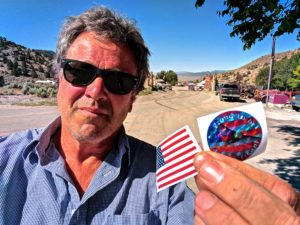 As of noon Tuesday the fate of Mohamed Noor was, to borrow a lyrical phrase favored by polite journalists, still “in the hands” of a Minneapolis jury. If I had a service revolver pointed at my head, I’d predict Noor walks, on the by now familiar grounds that he is a cop who “feared for his life” when he saw something blonde and pink raise a hand outside his police cruiser two years ago.
As of noon Tuesday the fate of Mohamed Noor was, to borrow a lyrical phrase favored by polite journalists, still “in the hands” of a Minneapolis jury. If I had a service revolver pointed at my head, I’d predict Noor walks, on the by now familiar grounds that he is a cop who “feared for his life” when he saw something blonde and pink raise a hand outside his police cruiser two years ago.
Among beard-stroking legal theorists, the fundamental twist in this case is whether Noor’s conduct — a plainly terrified young cop, his gun out of its holster while responding to a fairly routine call to a reasonably well-lit alley in an upscale part of town with remarkably low levels of violent crime — constitutes a criminal action on his part.
The third-degree homicide charge seems to be a stretch, given the evidence and the average jury’s inclination to give cops every possible benefit of doubt.
The second-degree manslaughter seems a better bet, but to my mind hinges on the part that requires, ” … the person’s culpable negligence whereby the person creates an unreasonable risk and consciously takes chances of causing death or great bodily harm to another.”
This issue there is who created “unreasonable risk” and the mindset that “consciously takes chances of causing death … .” Was young, inexperienced Mohamed Noor wholly responsible for that kind of thinking?
Were I juror, I’d be annoying the hell out of the other 11 by arguing that the “consciousness” that killed Justine Damond was created at least as much by Minneapolis police training/or lack thereof as Noor himself. After all, his defense has heavily emphasized how carefully and completely he followed police training … to protect himself and his partner.
While the jury deliberates, the Mayor and the police union, led by the medieval consciousness of Lt. Bob Kroll, are squabbling over the department’s shall we say, “highly problematic” training practices, specifically the hyperbolic “warrior” training that instills an amped-up combat zone mentality on recruits.
Part of the training, as we’ve learned, involves stark reminders of the ambush killing of Minneapolis cop Jerry Haaf, 27 years ago in what was then a rough section of Lake St. It was a notorious case and a tragedy. But what exactly makes it so relevant to daily police work in 2019 that it is seared into young cops as the sort of thing they must be prepared to deal with every moment they’re on duty, answering routine calls in quiet, upscale neighborhoods on warm summer nights?
Insurance companies, with all their data-driven underwriting may be a bane of modern American life, but the weird thing is that the numbers — the probabilities and risks — usually don’t lie. Which is why I have to wonder what the real world statistics are on the likelihood of another Jeffry Haaf cop ambush in Minneapolis?
Think of it this way: since Haaf’s murder in 1995 how many Minneapolis cops have answered how many calls, eaten at how many greasy spoons, rolled through how many dark (and not really so dark) alleys without being ambushed? Add all that up and what are the odds — really — that a Haaf-like ambush will happen again? Are we into winning-the-lottery odds yet? Lightning strikes twice odds? Peace breaking out in the Middle East odds? Donald Trump saying anything truthful odds?
Your average Bob Kroll will of course fly into a red-faced rage about how, “It only has to happen once! You goddam elitist pussy!” which is an echo of Dick Cheney’s famous “One Percent Solution”. That’s the one where you go to war with an adversary if there’s even a 1% chance he’ll do something nasty.
Where this leads is the obvious answer to who is most responsible for the death of Justine Damond? A young, inexperienced cop with an overactive paranoia? Or the city that selected and trained him, firing his imagination him with a war zone mentality?
Even a conviction of Noor will do little to nothing to prevent the next cop, “fearing for his life”, from gunning down some unarmed citizen. What will have some impact though is an enormous civil verdict — $10, $15, $20 million or more — against the city for its responsibility in consenting to police recruitment and training that instills more terror than competence in the people it badges and arms to “protect and serve.”

The news reported that Noor and his partner drove down the alley, didn’t see anything, and were about to go to the next call when the shooting happened. I don’t understand why the cops didn’t try to contact the 911 caller to find out what was going on or at least to let her know that they responded to her call. And why the 911 dispatcher didn’t tell her to stay in the house until the cops arrived. As always, an excellent column, Thanks.